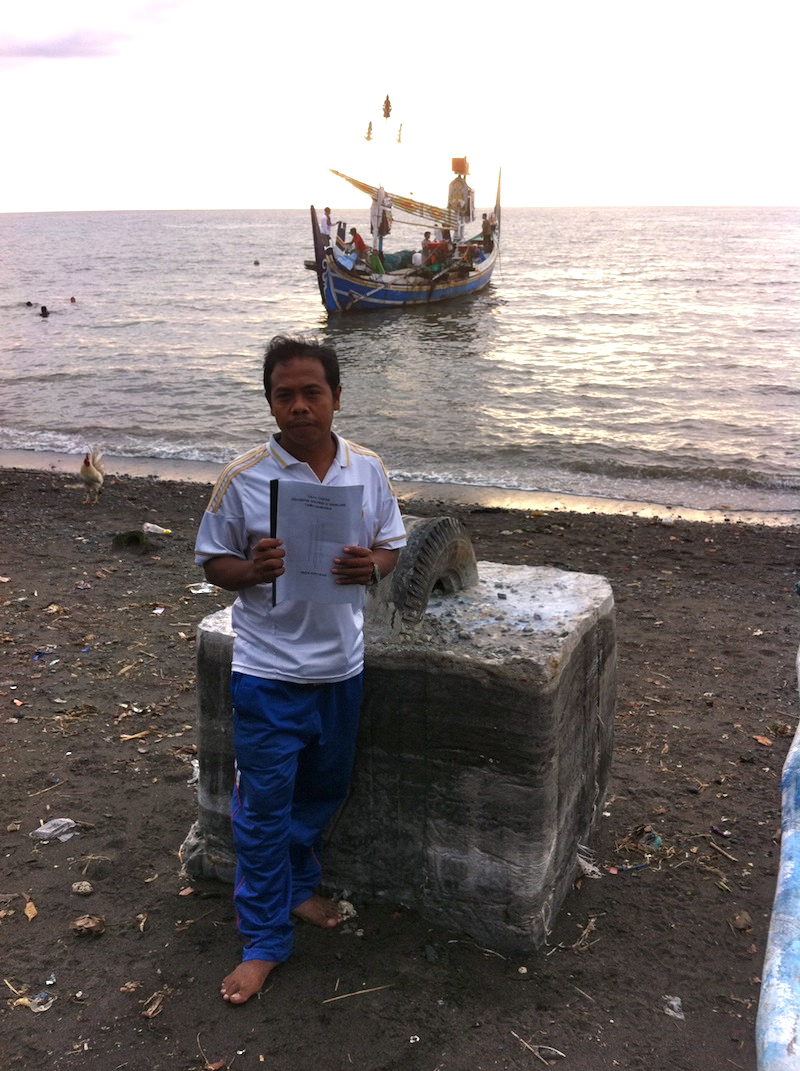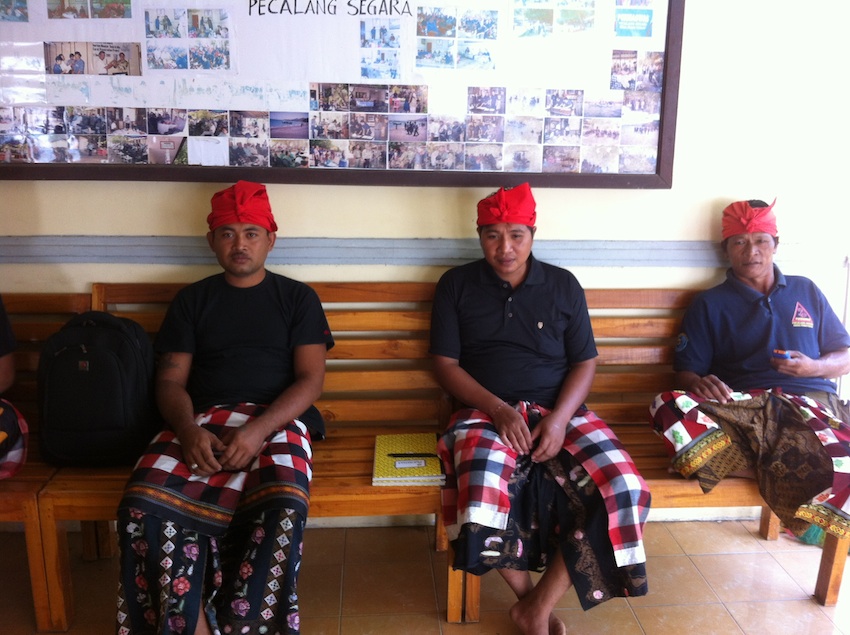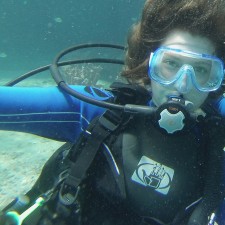Featured Stories | July 1, 2014
Going Local in the Coral Triangle
The biodiverse habitats in Southeast Asia’s Coral Triangle face threats from coastal pollution, ocean warming, and overfishing. But the environmental problem is only half the story. One MIT researcher is helping rural fishing communities improve the resilience of the fragile marine ecosystems they depend on for everything.
By Genevieve Wanucha
When Kelly Heber goes snorkeling in Bali, she’s not exactly vacationing. In a few minutes, she’ll be onboard a nearby boat, asking the captain if he’s seen any comeback in his fish stocks in recent years. She’ll ask how he decides if a coral reef is healthy enough to support daily visits from boatloads of tourists, and if littering and pollution pose threats.
As a PhD student in the MIT Department of Urban Studies and Planning working in the Science Impact Collaborative, Heber performs her environmental policy fieldwork in rural villages in Indonesia that are fringed by vibrant coral reefs. These reefs suffered during the period from the 1950s to the 1990s, when fishermen commonly exploded cyanide bombs in the water to kill and harvest all the fish in an area at once. Still in recovery, these “post-blast” coral reefs now attract thousands of tourists a year, generating the main source of income for village communities.

To sustain their fragile marine resources, many post-blast fishing villages have set up reef management cooperatives. These self-governing groups of young men establish and live by a set of rules called ‘awig-awig,’ which guide how the organization leaders resolve disputes with other villages over tour boat or fishing privileges. They also carry out actions to promote reef health, such as holding dedicated “reef clean up days” to pick up after tourists.
Coral reef ecosystems are resurging in some villages better than others. So, Heber studies the ways that different communities manage their reefs and eelgrass mangroves in order to identify the key ingredients for successful reef comeback. She ultimately wants to help fishing villages in Southeast Asia’s Coral Triangle build resilient reef management systems that can respond to the effects of climate change and ocean acidification.
“The guiding question of my research,” says Heber, “is how do we keep these coral mangrove systems intact and productive, while still allowing villages to derive economic benefits and livelihoods from their local resource stock?”
Heber uses a mix of methods, both qualitative and quantitative. She conducts in-depth interviews, surveys, and focus groups in the communities, for which she designs questions based on the Millennium Ecosystem Assessment, a well-established framework to assess human well being in the context of ecosystem change. If she’s not immersed in village life, she’s in the ocean. Using Geographic Information Systems (GIS)-based spatial mapping technology, she tracks changes in local coral reef ecosystems. From her dives and interviews, she is building an understanding of how human factors, such as religion or socioeconomic level, relate to reef health. This August, she heads to Tioman, Malaysia to add two new reef community cases to her collection.
“She’s a person who swims with sharks. She’s not afraid of anything,” says her adviser Lawrence Susskind, Ford Professor of Urban and Environmental Planning at MIT, “and that’s the only way she could do the work she’s doing, to go off to Southeast Asia as a single woman by herself, tromping through these rural areas, talking to people, learning Indonesian, and doing whatever she needs to do. It takes guts. That’s Kelly.”
Heber is beginning to see why some villages are having less success with reef comeback than others. “It’s like there is a gap in knowledge,” she says. “They know about climate change, coral bleaching and the reasons for sustainable practices, but it doesn’t filter down into day-to-day practices.” Heber once watched a cooperative member fish out a piece of trash from the water, and then toss it off the other side of the boat where none of the tourists were swimming. “I was surprised until I realized that it wasn’t a sanctioned ‘reef clean-up day,’ so the idea of littering as something not to do just wasn’t clicking,” she says.

In the Balinese villages with more resurgent reefs, Heber notices that the local reef management cooperative is nested inside the pre-existing religious structure, usually Hinduism. The young men who belong to the pecelan laut, or ‘sea police,’ entwine religion into their sense of stewardship over the reef and feel a deep commitment to performing the reef management duties.
Heber has critiqued the efforts of non-governmental environmental organizations that try—and fail—to institute the awig-awig structure in Balinese villages without learning about the community beforehand. “If there aren’t key variables in place, people are just not going to buy into it,” she says. For example, the reef management strategies that work in Hindu villages are not what work in Muslim villages, which do not have the direct democracy system needed for awig-awig rules.
To avoid this classic problem in natural resource management, Heber practices participatory action research (PAR), a core approach within the MIT Science Collaborative. PAR emphasizes a social scientist’s ethical obligation to foster a supportive, collaborative relationship with the local community. Next summer, she will return to Bali and share her research synthesis with the leaders of the local reef cooperatives in the awig-awig style.
Together, they will consider how Heber’s close analysis of their village can improve their reef management. She could help with building needed resources or writing grant applications for new technology to support reef health, such as “BioRock,” a method that speeds the growth of small areas of coral through electric shock generated by offshore. One village told her that they dream of a small library on the beach for tourists to learn about the coral reef species they are about to visit.






